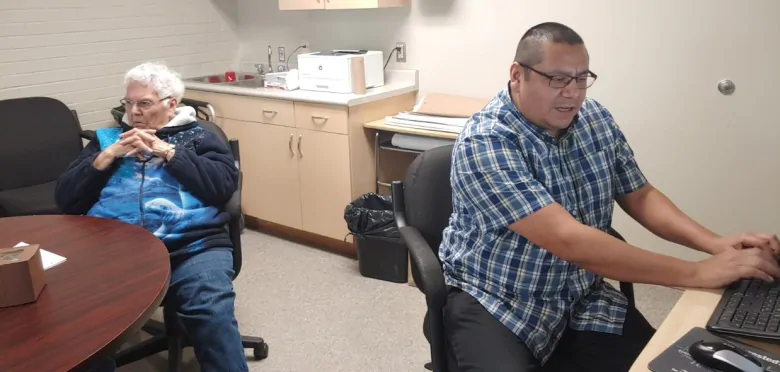Lake research video translated into Ojibway to help promote language as well as science

An environmental science video has been translated to Ojibway and the creators are hoping it sparks youth interest in science and language revitalization.
“We really believe that language is an essential part of culture and any way that we can help kind of promote local languages, the better,” said Pauline Gerrard.
Gerrard is the deputy director of the International Institute for Sustainable Developments Experimental Lakes Area and has been working with the organization since 2014.
The Experimental Lakes Area is comprised of 58 lakes located in northwestern Ontario that are set aside for scientific research. For 50 years, researchers have been doing studies to understand the impacts that humans are having on freshwater systems.
In 2017, IISD created a video about some of the work the organization does in researching the effects of mercury contamination on freshwater ecosystems, with versions in English and French.
That video was recently translated into Ojibway. Gerrard said funds for the Ojibway translation came from the Canadian Heritage Fund.
[embedded content]
For Gerrard, working with First Nations people over the years has been a good eyeopener into Indigenous worldviews.
“On a personal level, I’ve really learned a lot about the importance of water to Anishinaabe culture and the kind of personal responsibility that Indigenous people take for water management and water protection,” said Gerrard.
The Experimental Lakes Area is in the heart of Treaty 3 and Ojibway territory. Because of the location, the IISD has built relationships with Ojibway communities in the area.
The translations were done by Ojibway language speakers Nancy Jones, Don Jones and Jason Jones of Nigigoonsiminikaaning (Red Gut) First Nation.
Jason Jones is an Ojibway language teacher at Fort Frances High School and has been teaching the language since 2005.
Jason, who is related to elders Don and Nancy, said one of the coolest things about working on the video was coming up with new words in Anishinaabemowin/Ojibwaymowin for things like mercury and carbon dioxide.
“Our language has vitality, with the ability to create new words,” said Jason Jones.
Jason Jones’s duties included writing down the Ojibway translation for narrator Emma Bruyere to voice. Bruyere is a Grade 9 student of Jason Jones’s and is from Couchiching First Nation. She has grown up hearing Ojibway and describes herself as a student of the language.
“I watched the [English] video a couple of times throughout before I did the job, to know what I was talking about and I found it actually really helpful,” said Bruyere.
“I am really into environmental issues and things like that. And so learning about that really boosted my knowledge.”
Bruyere said it makes her happy to know that there are efforts being made to preserve the Ojibway language and she wants to stay involved with language revitalization after high school.
“I want to be working with the language my entire life… I know that I want to work with the language and help other people learn because of how much it’s dying out.”





